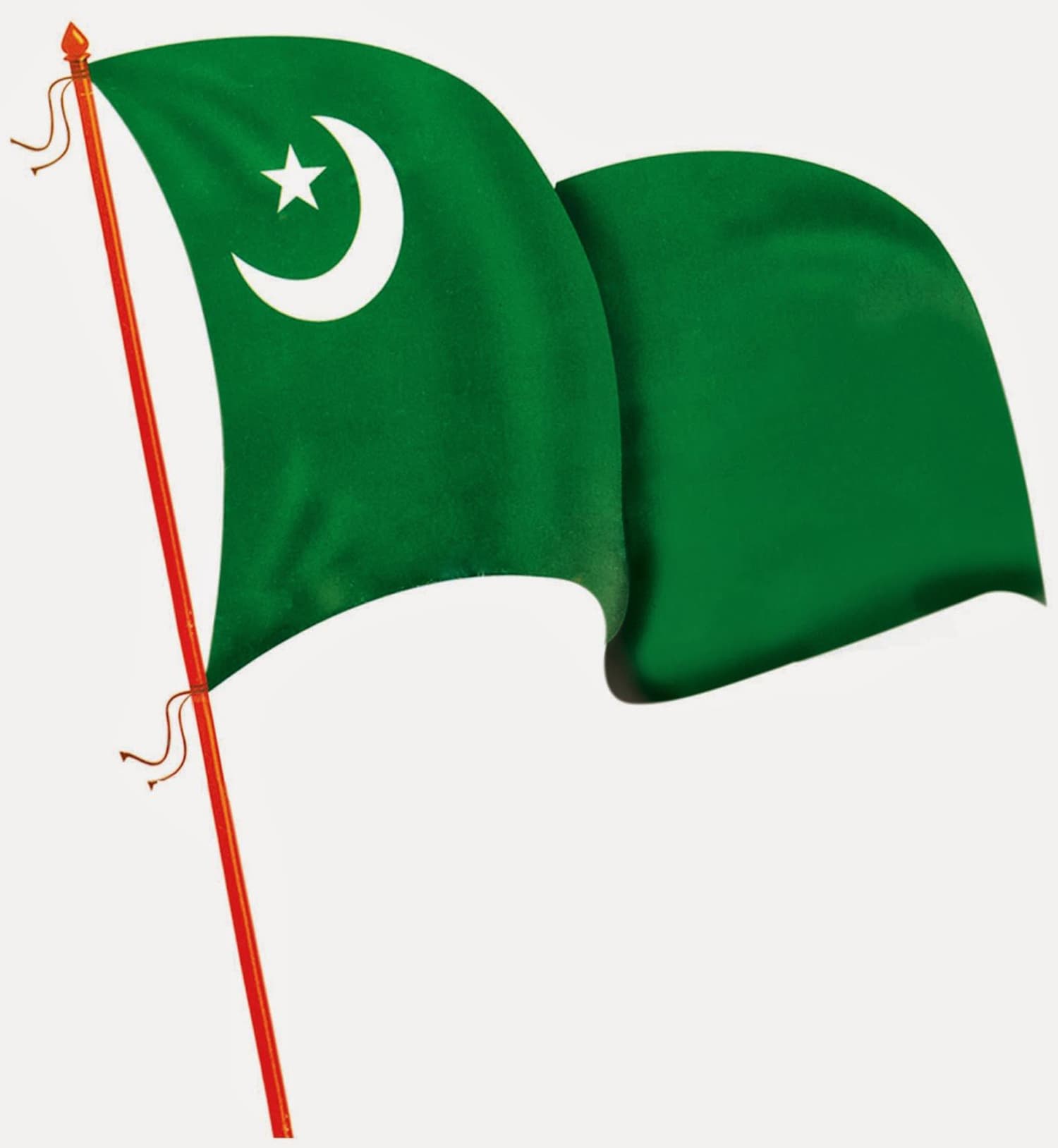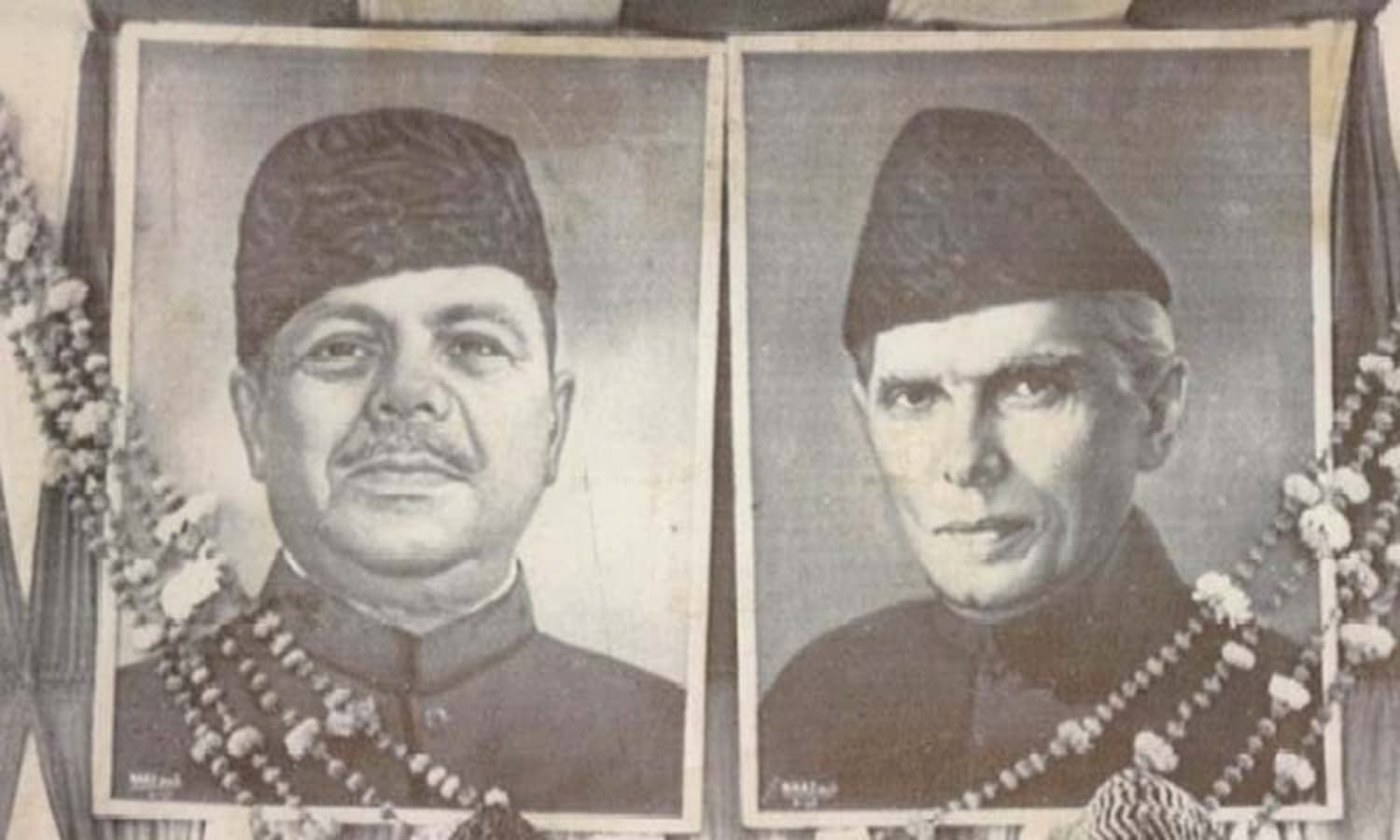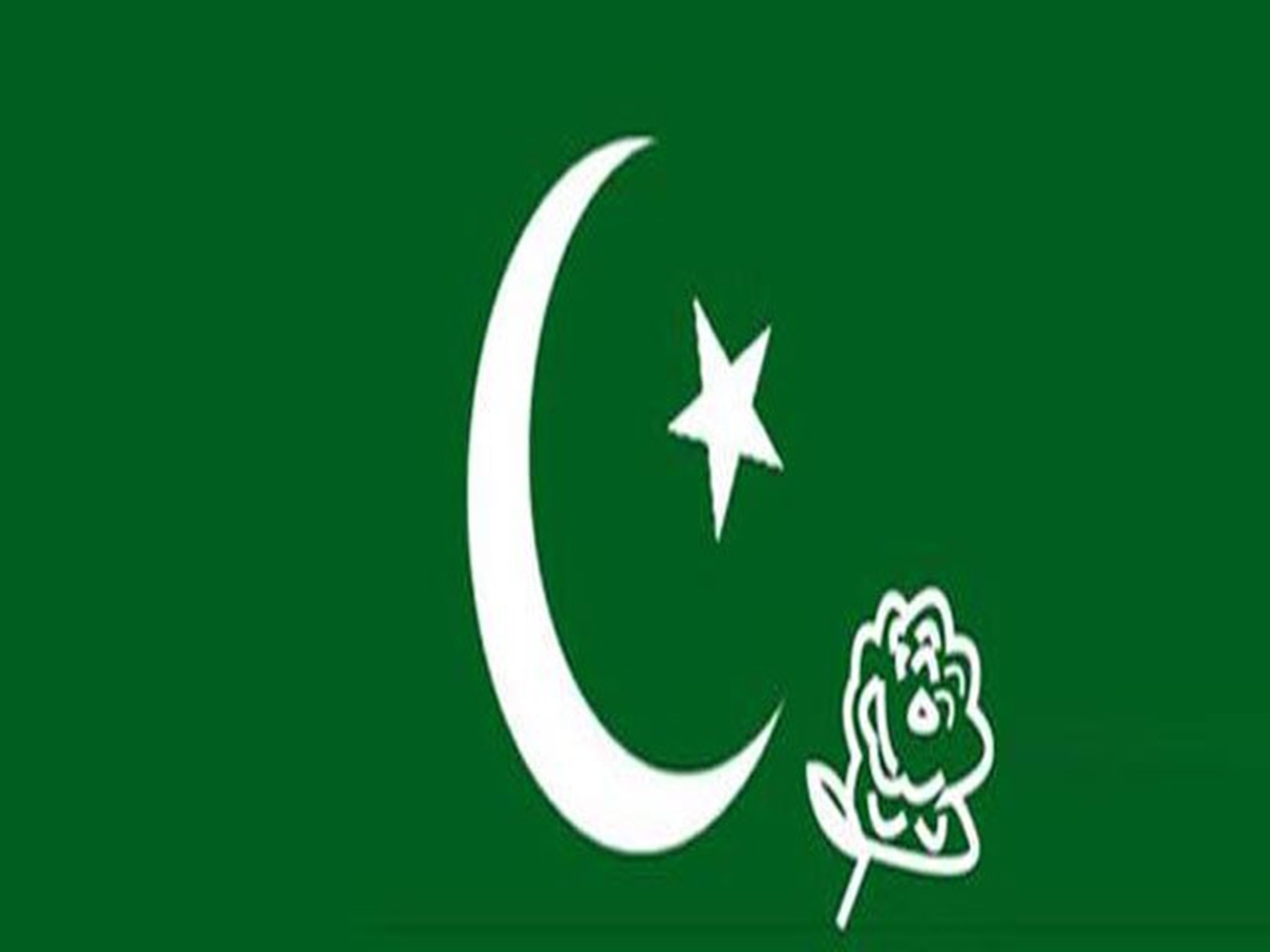The Muslim League: A factional history

Currently, the Pakistan Muslim League-Nawaz (PML-N) is perhaps the largest political party in Pakistan. It is one of the umpteenth factions that have been emerged ever since the All India Muslim League (AIML) became the Muslim League (ML) in 1947 and then began to splinter.
The ML was the party of Pakistan’s founders. But it faced multiple fractures soon after the creation of Pakistan in 1947. It almost vanished in the 1970s. Its revival began in the mid-1980s and today, one of its factions (PML-N), has managed to become a formidable electoral machine.
More interesting is the way the League and many of its factions have evolved. The AIML was a centrist party based on the notions of modern Muslim nationalism and ‘Modernist Islam.’ It remained to be so until the 1970s when it increasingly shifted to the right and became overtly conservative and even ‘Islamist.’
However, in the last decade or so, most of its major factions, especially the PML-N, have been moving back to the party’s original centrist position even to the extent of gradually disowning the ideological disposition it adopted in the 1980s.
All India Muslim League (AIML)


The party emerged as an early political expression of the gradual growth of a Muslim middle-class in India.
The party was inspired by the academic and social activism of the scholar Sir Syed Ahmad Khan who was one of the first major exponents of ‘Muslim Modernism’ in India.
1930: Iqbal’s call for separatism

In 1930, Muhammad Iqbal became the party’s president and in an address demanded a separate Muslim state (but one which will exist within an Indian federation).
He also urged lawyer and politician, Muhammad Ali Jinnah, to return to India (from the UK) and lead the League. Jinnah had quit politics after being disillusioned by the rising communal tensions between India’s Hindus and Muslims in the 1920s. He moved to the UK to practice law.
Iqbal glued the Muslim Modernism of the likes of Sir Syed and himself to the more radical currents of Pan-Islamism of that period to formulate an expanded idea of Muslim nationalism in India.
1940: Jinnah calls for Pakistan

Jinnah had returned to India in the mid-1930s and eventually became AIML’s president. During an address to party members in 1940, Jinnah declared that Muslims would be politically and economically undermined in a Hindu-majority India and thus needed to strive towards creating their own country, Pakistan.
1946: The League at the polls

The 1945-46 elections were called by the British to constitute a government at the centre and in the provinces.
The elections were vital for the League to prove that a majority of Indian Muslims considered it to be the main Muslim party in the country and agreed with the party’s demand for a separate Muslim-majority state.
The League was being directly challenged by the country’s largest Indian nationalist party, the Indian National Congress (INC); and also by radical Islamic parties who had labeled the League as a party of 'fake Muslims’.
The League’s manifesto for the election called for a separate Muslim-majority country but which would also welcome India’s other minorities (Christians, Buddhists, Zoroastrians and Sikhs) as equal citizens. The League also appealed to ‘scheduled class Hindus’, claiming that they would be better off in Pakistan.
The League won 114 out 250 seats in Bengal; 75 out of 175 in Punjab; 17 out of 150 in NWFP (present-day Khyber Pakhtunkhwa); 28 out of 60 in Sindh: 54 out of 228 in Utter Pradesh; 34 out of 152 in Bihar; 31 out of 108 in Assam; 30 out of 175 in Bombay; 29 out of 215 in Madras; and 4 out of 60 in Orissa.
Though overall the INC gained the most seats across India, AIML bagged 87.2% of the Muslim votes, thus becoming the largest Muslim nationalist party in the country.
The ruling party

Jinnah became governor general and Liaquat Ali Khan the first prime minister of Pakistan. All India Muslim League became the Muslim League (ML) after Pakistan’s creation.
The country’s first Governor General and PM both belonged to ML and the new country’s first Constituent Assembly had an ML majority. Jinnah in his first address described Pakistan as a modern Muslim-majority state but where the state would remain religiously neutral and where citizens would transcend their personal faiths to become Pakistanis.
Jinnah passed away in 1948.
The first fissures
In-fighting within the ruling Muslim League began almost immediately after Jinnah’s demise in 1948. The in-fighting turned bitter and the party began to fracture.
All Pakistan Awami Muslim League (APAML)

APAML was the first ML faction. It was formed in 1949 by a leading ML leader from Bengal (East Pakistan, now Bangladesh) Hussain Shaheed Suhrawardy. Suhrawardy had argued with ML leadership that the party needed to retain the populist tenor of AIML. He accused the leadership of ‘elitism’ and ‘losing contact with the masses.’ He broke away in 1949 to form APAML.
Jinnah Muslim League (JML)

Iftikhar Mamdot was the first chief minister of Punjab in Pakistan and headed the ML in that province. A close confidant of Mr Jinnah, Mamdot was known to be a stern and outspoken disciplinarian.
After Jinnah’s demise, Mamdot was ousted as Punjab CM for ‘disobeying party directives and PM’s instructions’. Mamdot quit the ML and formed his own faction, the Jinnah Muslim League in 1949.
Jinnah Awami Muslim League (JAML)

Jinnah Awami Muslim League emerged in 1950 with the merger of Suhrawardy's APAML and Mamdot’s JML.
Azad Pakistan Party (APP)

AIML had a vocal left-wing and Mian Iftikhar was a leading member of that wing. After Pakistan’s creation and Jinnah’s demise, this wing lost much of its influence in ML.
In 1949, Mian Iftikhar quit ML and formed a left-wing party, the Azad Pakistan Party. He took with him a number of socialists that had been part of the AIML. AIML merged with some other left-wing parties to form the National Awami Party in 1957.
Sindh Muslim League (SML)

Ayub Khuhro was the first CM of Sindh in Pakistan. He also headed ML in that province. In 1952, severe in-fighting between Khuhro and some other ML leaders in Sindh saw the central ML leadership asking Khuhro to step down. Khuhro quit and formed the Sindh Muslim League. SML folded in 1954.
1951, 1953 and 1954 provincial elections

Though ML enjoyed an ‘in-directly elected’ majority in the parliament, 1951 saw the first ever direct elections in two of West Pakistan’s four provinces, Punjab and NWFP.
In Punjab, out of a total of 191 seats, Muslim League won 140; Jinnah Awami Muslim League won 32; Azad Pakistan Party won 1; Jamat-i-Islami won 1; and 17 seats were won by independents.
In NWFP, out of a total of 85 seats, Muslim League won 67; Jinnah Awami Muslim League won 4; and 13 seats were won by independents.
Direct provincial elections were held in Sindh in 1953. Out of a total of 111 seats, Muslim League won 78; Sindh Muslim League won 7; and G.M. Syed’s Sindhi nationalist party, the Sindh Mahaz won 7. Independents won 19.
Jinnah Awami League

In 1953, Suhrawardy's Jinnah Awami Muslim League removed the word ‘Muslim’ from its name and became an entirely secular centre-left party. However, Mamdot quit and rejoined PML.
1954 East Pakistan election: The unraveling of ML

In 1954, the first direct provincial elections were held in the Bengali-majority East Pakistan. The Jinnah Awami League formed an alliance with the left-wing Democratic Party; the left-wing Peoples Committee Party; and the right-wing Nizam-i-Islam Party. The alliance was named United Front.
Out of a total of 309 seats, Jinnah Awami League and its allies won 223 seats; Muslim League could win just 10. The Pakistan National Congress (a secular East Pakistan Hindu-dominated party) won 24; another Hindu party, the Scheduled Caste Federation won 27 seats; The Front (a party of Hindus and Christians of East Pakistan) won 10; the Communist Party won 4 seats; the Ganatantri Dal won 3; a Buddhist party won 2; a Christian party won 1; and 1 seat went to an independent.
The Muslim League was routed and with this rout it also began to lose its majority in the centre. Jinnah Awami League’s victory would go on to give Suhrawardy enough clout to become Pakistan’s Prime Minister in 1956.
Republican Party (RP)

In 1955, veteran ML man Iskander Mirza helped shape a secular centre-right party, the Republican Party. The party, which had the backing of the state and the ‘military-establishment,’ was immediately joined by a number of ML members and leaders in the parliament.
Due to the emergence of the Republican Party, ML’s strength in the parliament was greatly weakened, especially after Mirza became President in 1956. He was at odds with PM Suharwardy of the Jinnah Awami League. Compared to Jinnah Awami League’s populist and left-leaning disposition, the Republican Party was conservative, but equally secular. It folded in 1958.
Awami League

After tasting victory in the 1954 East Pakistan election, the Jinnah Awami League increasingly became a Bengali nationalist outfit. In 1956, it shortened its name to Awami League. It became Bangladesh’s founding party in 1971.
The party ends

In 1958, Mirza and then army chief Ayub Khan imposed the country’s first martial law. Months later, Ayub removed Mirza and became President. Political parties were outlawed, including ML and all its factions. ML by then had already been reduced to becoming a small and exhausted entity.
Second coming
When the Ayub regime lifted the ban on political parties in 1962, all ML factions were in disarray. Looking to be associated with a political party as President, Ayub decided to revive the Muslim League.
Pakistan Muslim League - Convention (PML-Convention)

Ayub became President of Pakistan in 1959. In 1962, he wanted to author a new constitution and form his own party. He called for a convention of some leading Muslim League and Republican Party members. The convention announced the formation of a new Muslim League. The word Pakistan was added and the party became Pakistan Muslim League (PML). However, it became PML-Convention when some other ML leaders refused to join it and formed their own faction.

PML-Convention’s manifesto echoed the political and economic tenor of the Ayub regime: Rapid industrialisation, free-market-enterprise and ‘Muslim Modernism’ with emphasis on science and technology. The PML-Convention became the majority party in a parliament elected through Ayub’s complex ‘basic democracy’ system.
Ayub was chosen as the party’s chief and a young Zulfikar Ali Bhutto became its first Secretary General.
Pakistan Muslim League - Council (PML-Council)

Immediately after the formation of Ayub’s PML, two veteran ML leaders, Sardar Abdul Qayyum Khan and Mumtaz Daultana formed their own faction. This became PML-Council and its members sat on the opposition benches in parliament.
The party’s manifesto called for the implementation of parliamentary democracy and elections based on adult franchise.
The 1965 Presidential Election

Ms Jinnah was requested by PML-Council to be its candidate for the 1965 Presidential election. Soon, other opposition parties such as the left-wing National Awami Party (NAP), the centre-left Awami League, the right-wing Nizam-i-Islam party, and the right-wing Jamat-i-Islami pooled with PML-Council to form the Combined Opposition Alliance. Ms Jinnah became its candidate.
Ayub received 64% of the total votes and Ms Jinnah bagged 36%. Even though Ayub’s victory was convincing, he lost badly to Ms Jinnah in the country’s two main urban centres, Karachi (in West Pakistan) and Dhaka (in East Pakistan). Ms Jinnah also managed to sneak past him in Hyderabad. Rest of the cities and towns all went to Ayub and his PML-Convention.
The wilderness years
In 1969, the Ayub regime fell due to a widespread protest movement headed by student groups, labour unions and opposition parties. The new military chief and President, Yahya Khan, agreed to hold the country’s first direct election based on adult franchise.
Z.A. Bhutto who quit PML-Convention formed his own left-wing party the Pakistan Peoples Party (PPP). Its rise was swift in West Pakistan. In East Pakistan, the Awami League (AL) demanded autonomy for the Bengali-majority region.
Qayyum Muslim League

To neutralise the PPP and AL, an attempt was made to unite PML-Convention and PML-Council. Instead, PML-Council leader, Sardar Qayyum, quit the party and formed his own faction, Qayyum Muslim League (QML).
The historic 1970 elections

Out of a total of 300 seats, the Bengali nationalist party, Awami League won 160; the left-wing PPP won 81; the centre-right Qayyum League won 9; the Deobandi Islamic outfit, Jamiat Ulema-i-Islam won 7; the Barelvi Islamic party, Jamiat Ulema-i-Pakistan won 7; the centrist PML-Convention won 7; the left-wing National Awami Party won 6; the right-wing Islamic party Jamat-i-Islami won 4; the centre-right PML-Council won 2; the centre-right Pakistan Democratic Party won 1; and the independents won 16.
In 1971, East Pakistan broke away to become Bangladesh after a vicious Civil War there. The PPP which had won the 1970 election in West Pakistan became the new ruling party. The Qayyum League merged with the PPP.
Muslim League - Functional (ML-F)


In 1973, PML-Council man and powerful Sindhi landlord, Pir Pagara, managed to merge PML-Council and PML-Convention to form PML-Functional.
The party was backed by industrialists and the business community and it stood against the PPP regime’s nationalisation policies. It lost all the by-elections which it took part in between 1972 and 1976. In 1976, it joined the 9-party anti-PPP electoral alliance, the PNA, which also included the country’s three frontline religious parties, the JUI, JUP and JI.
PNA began a protest movement after disputing the results of the 1977 election. The movement turned violent. General Ziaul Haq toppled the Bhutto regime in a reactionary coup. He banned all political parties, including PML-Functional, even though the party had welcomed the take-over.
Pakistan Muslim League-Qasim

Former PML-Convention member and general secretary of PML-Functional, Malik Qasim, broke away from PML-Functional after the party welcomed the 1977 Ziaul Haq coup. Qasim also disagreed with PML-Functional’s gradual drift from centre towards the right.
In 1978, he formed his own faction, PML-Qasim. The party supported the PPP in opposing the intransigent Zia regime across the 1980s.
Revival

After becoming President and lifting Martial Law in 1985, Zia held a general election. The election was boycotted by opposition parties. A leader of PML-Functional, Muhammad Khan Junejo, converted PML-Functional into a new ‘united’ Pakistan Muslim League. This PML became the majority party in the parliament and elected Junejo as the new PM.
The new PML’s manifesto was close to the Zia regime’s program of liberalising the economy, imposing ‘Islamic laws’, and supporting the anti-Soviet ‘Afghan jihad.’
Pakistan Muslim League-Nawaz (PML-N)

Mian Nawaz Sharif was a member of the 1985 PML. That PML became part of a right-wing alliance, the IJI, during the first post-Zia election in 1988. The election was won by PPP. The PPP regime was removed by President Ishaq due to alleged cases of corruption. The IJI won the 1990 election. Nawaz became PM.
However, a lobby in the PML wanted Junejo to be made PM. This lobby broke away from PML in 1993. The remaining party was renamed PML-Nawaz. PML-Nawaz stood for ‘continuing Zia’s mission’ (of Islamisation and economic revival). It was removed on charges of alleged corruption. It became the ruling party again in 1997 and turned even more conservative. Its government was toppled in a military coup in 1999 by General Pervez Musharraf.
PML-N lost momentum in the mid-2000s. But at the end of the Musharraf regime in 2008, PML-N bounced back strongly. It swept the 2013 election and Nawaz became PM again.
PML-N remains to be the largest PML faction. However, over the years, its ideological compass has been moving back towards the centre. It continues to support economic liberalisation and development; but also liberal democracy. It now holds an entirely moderate religious outlook. It also backs military action against religious extremists.
Pakistan Muslim League - Junejo

Formed by PML member Hamid Nasir Chatta, PML-Junejo emerged when supporters of Muhammad Khan Junejo broke away from PML after Junejo’s demise in 1993. The party supported the PPP during the 1993 election.
Pakistan Muslim League - Jinnah

Manzoor Wattoo was a prominent leader in PML-Junejo. The second Benazir Bhutto regime (1993-96) rewarded PML-Junejo’s support to the PPP during the 1993 election by making Wattoo the CM of Punjab.
However, in-fighting erupted in PML-Junejo and Wattoo was removed as CM in 1995. He formed his own faction, PML-Jinnah. In 2008, he joined the PPP.
Pakistan Muslim League-Quaid (PML-Q)


A serious rift happened in the PML-N during the second Nawaz Sharif regime (1997-99). When Nawaz was toppled by Gen Musharraf in a military coup in 1999, four leaders of PML-N, Chaudhry Shujaat Hussain, Chaudhry Pervez Elahi, Mushahid Hussain and Shaikh Rashid decided to side with Musharraf.
When Musharraf consolidated his position in 2002, these four got more members from PML-N and from other PML factions and also included some members of the PPP to form the pro-Musharraf PML-Quaid.
PML-Q won the 2002 election and supported Musharraf regime’s sweeping economic reforms and doctrine of ‘enlightened-moderation’.
PML-Q lost the 2008 election to the PPP and was routed by PML-N in the 2013 election.
Pakistan Muslim League - Zia

Formed in 2002 by former PML-N member and son of Ziaul Haq, Ijazul Haq, it's one of the smallest PML factions.
Awami Muslim League (AML)
Formed by former PML-N and PML-Q member, Shaikh Rashid, AML is a tiny faction which at the moment is allied to Imran Khan’s centre-right PTI.
All Pakistan Muslim League (APML)

This faction was formed by Pervez Musharraf after he resigned from the position of President of Pakistan in 2008. APML is still a tiny PML faction existing as a party in Pakistan's political sphere.






